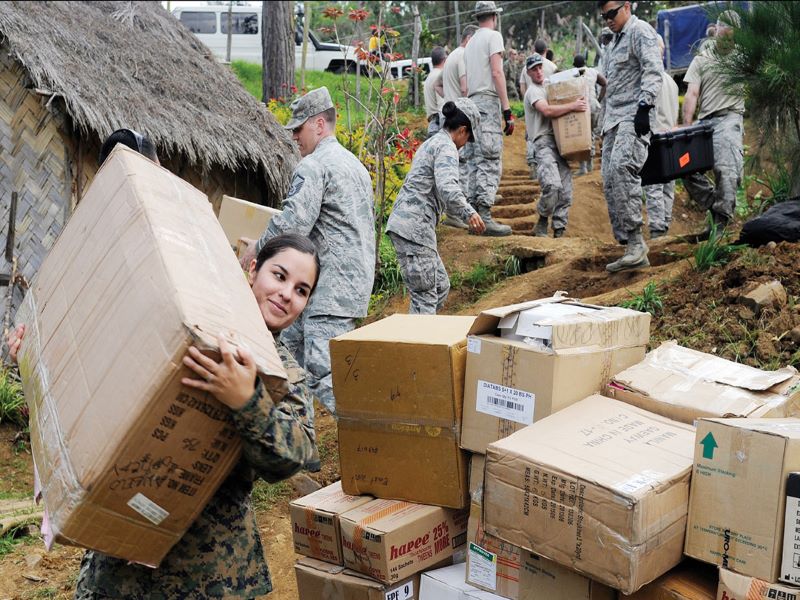Among the new observer members of the Arctic Council is South Korea. At first sight an unlikely country to join the structures of the Council but, along with China and Japan, it is one of the East Asian heavyweights to gain that distinction. This piece follows up on the series about Japan, and investigates Seoul’s motivations and interests with respect to the Arctic, and what measures it might take to achieve them. Like Japan, South Korea’s reliance on strategic maritime routes makes the Arctic a logical choice for mitigating the geopolitical risks present in South Eastern Asia.
Seoul’s primary concern is North Korea’s occasional nuclear and missile tests that directly threaten the peace of the Korean Peninsula. In response, the annual exercises between South Korea and the United States are meant to provide a check to the North. However, they may also stress regional peace. In this context, the political and security risks are somewhat alleviated by South Korea’s participation in the U.S. Pacific Ally system, but it is not possible to remove them entirely.
So far, in the Far North
South Korea’s polar policies are still at an early stage, but they will mature over time as communications with the littoral Arctic states and the Council become more sophisticated. Using its enhanced institutional status, Seoul will also justify investment to build on its national program for polar access and research. Currently, South Korea operates one research site, Dasan Base, on Svalbald and also has commissioned a single research vessel, the Araon icebreaker. The policy direction of President Park Geun-Hye’s administration is to expand links with the Eurasian space from a political and economic perspective. Doing so via the Arctic diversifies South Korea’s links and enhances the country’s status as an attractive business partner.
[captionpix align=”right” theme=”elegant” width=”400″ imgsrc=”http://images.bwbx.io/cms/2013-08-22/econ_artic35__02__614x365b.jpg” captiontext=””]
South Korea’s intentions on the Arctic have a primarily economic character. Being one of the world’s major markets, South Korea relies heavily on maritime routes for the import and export of resources and goods. This reality may be a strength in certain aspects, but is also a strategic liability. Any changes to Chinese, North Korean and even Russian economic and security policies might pose risks to South Korea; risks whose effects are difficult to predict accurately and comprehensively. They may even endanger the integrity of important maritime passages. Further still, the threat of unreliable shipping routes is enhanced by the constant unrest of the Middle East. The oil traffic from the Hormuz Strait, and the political upheaval in Egypt put in question the safety of traversing the Suez Canal, which makes stable alternatives, in the Arctic for example, very attractive.
Seoul: Shipping and Shipbuilding.
The trade route to Europe along the Northeastern route in the Russian Far North totals about 15,000kms, whereas the route through the Suez adds up to about 22,000km. Since shipping is one of the largest industries in South Korea, the significantly shorter distance could really benefit the country. The major savings in time, fuel and labour costs could both lower the cost for producers and the price for end consumers. However, there are some drawbacks. Arctic shipping requires the development of a specific class of ship that is able to handle floes and extreme temperatures, as well as crews with a different set of skills. In addition, summers offer only a 3-4 month ice-free window for safe sailing per year.
Being among the biggest importers of crude and liquefied natural gas in the world, supply lines for these energy sources are of strategic concern for South Korea. Guaranteeing these supply lines through the Arctic would mitigate many of the aforementioned security risks. It is in this respect that South Korea can offer its second industry, shipbuilding, with comparative advantage, and connect it with its shipping industry.
Shipbuilding is the second arm of South Korean strategic thinking. Effective trading routes will optimize trade links in the northern hemisphere and create more demand for ships that are capable of traversing ice floe regions. Relations between Nordic countries and South Korea’s shipbuilding industry would help spur the commercial boost that corporations would need to gain market access and establish a long-term presence in this market for specific vessels. In just one example, Daewoo is already participating as a minority partner in the development of shipbuilding projects in the Russian Arctic. This is a strong precedent and a promise that, going forward, business relations are going to intensify.
In sum, many of the policies that we might see come out of South Korea on the Arctic will have a distinct commercial and economic character, albeit motivated by political and security concerns. The Arctic offers much-needed diversification of the country’s relations. Increased involvement in the High North will mitigate the risks posed by the tense South East Asia geopolitical space.
The next article in this two-part series will look more closely at Seoul’s policies and examine its participation in the US Pacific Ally System as an influencing variable for South Korea’s Arctic involvement.



